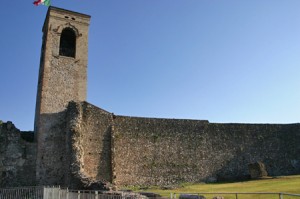Rocca Castle of Cavriana
The Rocca Castle of Cavriana was one of the largest in Mantua, probably the first fortification dates back to the Canossa period in the 11th century.
Rocca Castle of Cavriana: the village is listed among the properties of the monastery of S. Giulia di Brescia in 905, in the diplomas of Berengario of 958 and in some privileges of the Emperor Henry III of 1045 towards the Bishop of Mantua. Towards the eleventh century Cavriana became one of the properties of Canossa and it is in this period that the first fortification was probably built. Subsequently to the Canossa the ownership of the village passes to the free Municipality of Mantua that, to defend the boundaries from the growing power of the Municipality of Verona, grants it to the family of the Riva with defensive tasks but, in the second half of the XIII century, they are supplanted by the emergent family of the Bonacolsi, who in turn, in 1328, were replaced by the Gonzagas with the election to Imperial Vicar of Luigi Gonzaga by the Emperor Ludwig IV the Bavaro. With the increase in danger due to the neighboring Visconti, the castle is reinforced with high walls that surround the entire village, while the fortress has at that time four towers at the corners; in the second half of the fourteenth century clashes with the Visconti are frequent and in 1383 he moved to Cavriana Francesco I Gonzaga to escape the plague and died here in 1407. Between 1458 and 1461 the fortress was strengthened and modified to a design by Giovanni da Padova to adapt to new war techniques and the advent of cannons, it is also surrounded by a system of ditches. In 1501 Francesco II Gonzaga, at the time military commander in the pay of the Serenissima, armed the fortress of artillery. In the first decades of the seventeenth century the Rocca Castello di Cavriana appears to be the largest of the state, is then attacked and occupied with partial demolition, so that in a census of the defensive structures of 1650 the castle is decayed. In 1708 the Gonzagas fall and the Austrians are not interested in rebuilding the fortification, so much so that in 1771 they ordered the demolition.

